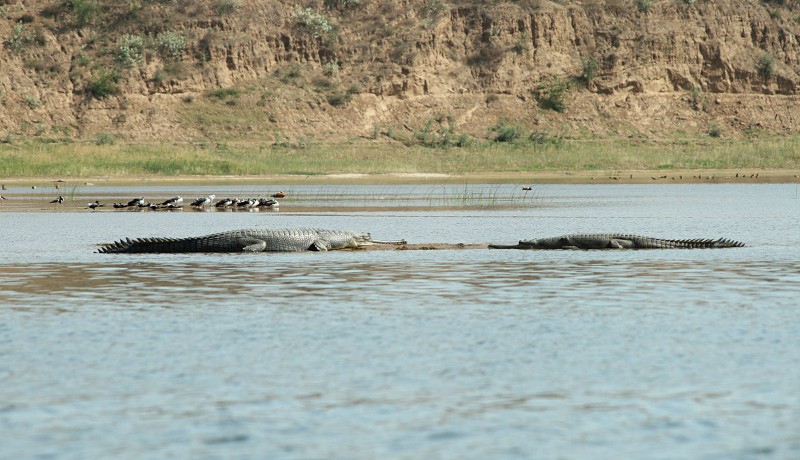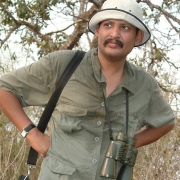
People

Jagdish Krishnaswamy calls for a paradigm shift in the management of our rivers
The rights of nature have been part of many spiritual and cultural discourses and texts for over a thousand years in India and elsewhere. In the face of large-scale appropriation and modification of natural processes, resources, natural spaces and destruction of ecosystems, especially in the past few hundred years, the focus on the rights of nature and natural entities has recently been renewed in India and abroad because of a few key developments.
Ecuador was the first country to recognise the rights of nature in its Constitution by including a chapter, Rights for Nature. The country redrafted its Constitution in 2007-2008, which was subsequently ratified by a referendum by the people in September 2008. Rather than treating nature as property under the law, Rights for Nature articles acknowledge that nature, in all its life forms, has the “right to exist, persist, maintain and regenerate its vital cycles. And we, the people, have the legal authority to enforce these rights on behalf of ecosystems”. The ecosystem itself can be named as legal defendant, although local communities can also intervene.
This was followed by New Zealand, where, for the first time in the history of nations, on 16 March 2017, a river was granted the same legal rights as a human being. After the longest legal battle in the country’s history, Te Awa Tupua, a river revered by the Whanganui Maori tribe, was recognised as a living entity with all the rights, duties and liabilities of a legal person. Two custodians—one from the government and another from the tribe—have also been appointed for the river.
Just five days after this judgement, on 21 March, the High Court of Uttarakhand made a landmark judgement by declaring the Ganga and Yamuna as living entities. In sharp contrast to the New Zealand case, the court allowed the director-general of the Namami Gange project, the Uttarakhand chief secretary and the advocate general of the state of Uttarakhand, who are government functionaries with no civil society representative, the right to represent the rivers. However, the court is likely to entertain petitions filed on behalf of the river by any citizen or institution. Any further development will be watched very keenly by all those worried about threats to the river from development projects.
Any alert observer who has had the opportunity to walk, pray, bathe, boat in, or camp by undeveloped and unpolluted rivers in India will appreciate the complex spatial and temporal dimensions of our Indian river heritage. The diurnal, seasonal and inter-annual cycles and variability, and shaping of the flood plains and valleys by thousands of years of monsoonal flows and sediment from hills and mountains, have created ecological, cultural and economic opportunities that change and evolve, but need continuous replenishment from flowing water and the sediment it carries.
Like many other countries, India has had to abstract water and transform many rivers to support irrigation, hydropower, industry and the needs of growing cities and towns, and will continue to do so. Our rivers are currently undergoing and proposed to undergo massive transformations of their hydrology and ecology that, if not modified or mitigated, will convert many of them into utilitarian conduits and canals for conveying regulated water and transport of goods, and potentially destroy or degrade their geomorphologic and ecological attributes. Between river linking and the inland waterway schemes, the unique attributes of these rivers will be severely challenged by activities such as abstraction and inter-basin transfer of water, massive dredging of sediments, removal of islands, and large-scale concretisation of river banks.
Our national anthem mentions two of our rivers by name: a tribute to their distinct cultural, spiritual, geomorphologic and ecological attributes. To convert such diversity and complexity into mere channels for conveying water and goods could impair their ability to sustain these rivers as living and breathing ecosystems. The narrow vision of engineers and developers that is sucking the water, sand and the very life out of every river before it reaches the sea for short-term economic gains should be replaced by a scientific, sustainable and socially inclusive approach that respects the river and its inhabitants.
Some might argue that many of our rivers are already regulated by dams and barrages, and so further transformations may not be problematic. This paradigm is flawed because we have observed that with whatever regulated flow and the sediment that is available, the rivers are still able to sustain biodiversity and ecosystem services for people downstream. For instance, at Son in Madhya Pradesh, one of the last few remaining breeding sites for the endangered Gharial and the Indian Skimmer, we were able to demonstrate that even the regulated flow from the Bansagar Dam could be adapted to sustain the breeding of both species. So, regulated rivers as well as unregulated ones should have the same rights as injured and physically challenged people, or sometimes more rights under the law compared to healthy human beings.
What might be the 10 legal rights of a river as a ‘natural’ person in the Indian context, which could be the basis for legal and other interventions by civil society and governments to conserve our last remaining riverine ecosystems? How do we specify the rights of India’s few remaining rivers and their ecosystems? How do we ensure their rights to exist, persist, maintain and regenerate their vital cycles? We could make a charter of a river’s rights by focusing on specifics. These could include the right to:
- Reach the sea and form estuaries and deltas
- Have ecologically meaningful flows in all seasons including floods and dry-season base-flows
- Maintain natural geomorphologic and ecologically important features such as meanders, mid-river islands and oxbow lakes at least in some stretches
- Carry and deposit sediment for sustaining ecology and environmental functions, including maintaining water quality and habitat for biodiversity and humans
- Maintain its own unique biodiversity without introduction of alien and potentially harmful species
- Minimum standards of water quality along the entire length fit for bathing, swimming and maintaining diverse fish communities
- Have sufficient fish to sustain artisanal fisher folk who reside on banks
- Retain the diverse natural attributes that are of great cultural and ecological significance to people residing on banks
- Have its own distinct geomorphologic, ecological and spiritual identity from headwaters to delta, which should not be disrespected, erased or diluted by insensitive development projects
- To exist, evolve and persist, share waters, ecological and economic wealth in an equitable and sustainable manner for the benefit of all
We need to bring engineers, ecologists, climate, agriculture and water resource specialists together to come up with guidelines to manage regulated rivers and operate dams and barrages to maintain the integrity of rivers. This will need savings of water in all sectors and sustainable extraction of sand. And for the remaining few unregulated rivers, we need careful scrutiny and adoption of precautionary principles before embarking on any development.
The recent judgement on the legal rights of rivers and river conservation projects such as Narmada Seva Mission, launched by Prime Minister Narendra Modi in Madhya Pradesh, offer hope for reviving and restoring India’s great rivers. Indeed, the need of the hour is a paradigm shift in our river management policies. It’s time to act.
The writer is an ecohydrologist and landscape ecologist
Photo: Jagdish Krishnaswamy Featured in Harmony — Celebrate Age Magazine June 2017
AGRICULTURE
FORESTS
WILDLIFE
WATER
WASTE MANAGEMENT
ENERGY
SUSTAINABILITY
EXCLUSIVE COLUMN
you may also like to read
-
For the love of Sanskrit
During her 60s, if you had told Sushila A that she would be securing a doctorate in Sanskrit in the….
-
Style sensation
Meet Instagram star Moon Lin Cocking a snook at ageism, this nonagenarian Taiwanese woman is slaying street fashion like….
-
Beauty and her beast
Meet Instagram star Linda Rodin Most beauty and style influencers on Instagram hope to launch their beauty line someday…..
-
Cooking up a storm!
Meet Instagram star Shanthi Ramachandran In today’s web-fuelled world, you can now get recipes for your favourite dishes at….








